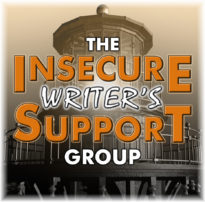Visit my author site https://www.pjcolando.com and note my slogan. Observe that exclamation point is represented in verbiage and sign:
“I am a walking exclamation point, eager to share the wit and wisdom of the Midwest … welcome to the neighborhood!”
Something similar to the exclamation point was seen in a manuscript from 1399, written by Florentine chancellor Coluccio Salutati. In that manuscript, the symbol appears to be the Latin interjection Iō (meaning joy), but the scribes placed the “I” over the “ō.”
Yes, I’m walking personification of joy! Relentless in my pursuit of joy rather than fame or money or any other form of flamboyance. Joy that affords abundant peace.

Lacopo Alpoleio da Urbisaglia was the first historical figure who claimed to have invented the exclamation point. This 14th-century Italian poet wrote Ars punctuandi, which translates to The Art of Punctuating,written long before present writing guides like Strunk and White’s. Perhaps he borrowed the mark from the scribes’ mistake cited above.
His name for the exclamation point was the “admiration point.”
Skip forward a few hundred years and the exclamation point is serving its excitable purpose for writers. A rumor goes that Victor Hugo, desperate to know the sales of Les Misérables, sent his agent a telegram consisting of only a question mark. As telegrams were priced by the character, the agent conveyed the rousing success with a single exclamation point.
Other writers have not been so appreciative of the expressive punctuation. According to F. Scott Fitzgerald, “Cut out all those exclamation marks. An exclamation mark is like laughing at your own jokes.” In Terry Pratchett’s “Discworld” series, a character claims, “Multiple exclamation marks are a sure sign of a diseased mind.” He elaborates in a later edition, “And all those exclamation marks, you notice? Five? A sure sign of someone who wears his underpants on his head.”

But F. Scott, who I admire greatly, never met the author who spoofed super heroes with this series of books and made beaucoup bucks via tons of fans.
While the exclamation point was popular in print, it didn’t make its way onto typewriters and keyboards until the 1970s. Prior to the ’70s, you would have to create it manually, by typing a period, then backing up and placing an apostrophe over the period — sort of like a semicolon flipped upside down. As you might surmise, Constant Reader )!), the exclamation point is one of my favorite punctuation marks… It shares a key with #1.
P.S. I’m glad that the monthly question is optional… I’ve got nothing to say about audio books. In that arena I am truly insecure.


I’m the same in terms of audiobooks. I don’t have any input on them other than there’s too much talking for me. LOL
Thanks for your support, PJ #2
Yes, they say that exclamation points are no-no’s. Glad you’re pursuing joy instead of money. It’s so much more worth while.
Pursuit of joy is easier than making money for this writer – thank goodness this is my ‘encore career’ and not my current livelihood –
I can actually recall using a typewriter back in high school that you had to actually do that period apostrophe routine. Needless to say, that whole process killed any words per minute score you were going after.
The pursuit of joy! I like it! It sounds more energetic and focused than the generic pursuit of happiness.
I like your read-and-response to my blog and hope that we ‘meet’ in the blogosphere next month!
LOL, PJ! This post was great fun! I’m notorious for using exclamation marks! Oh did my school kiddos love Captain Underpants! I never read one of his books aloud to them. I just couldn’t do it. I was perfectly fine with them in my classroom book collection though.
I have a diseased mind, and a tired mind too. Somehow I slipped into “Somebody” vs “Someone,” and was distracted by that amazing Queen video. I’d never seen it before. Freddie Mercury was a strutting exclamation mark!!! I’m now on the third playing of “Somebody to Love.” Thanks for putting an exclamation mark on my evening ~ definitely time for me to call it a night! Have a good one!
Kindred Spirit!! I’m glad you had fun, for that was the point of this post! I’d never thought of it before but, indeed, Freddie Mercury was a strutting exclamation point!!
Not on a typewriter until the 70’s? Wow! Glad it’s there now as I do tend to use them often.
Yeah – wowowow!